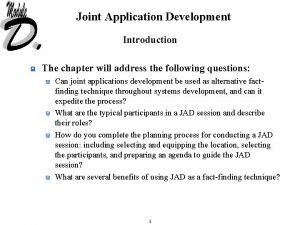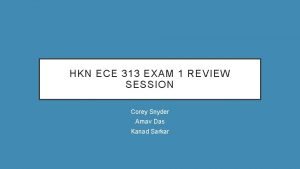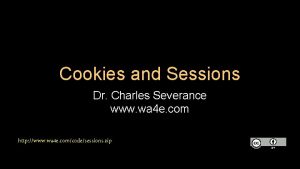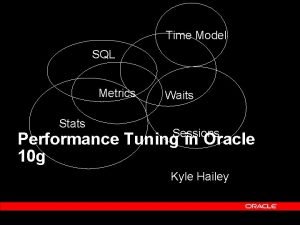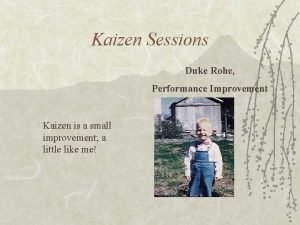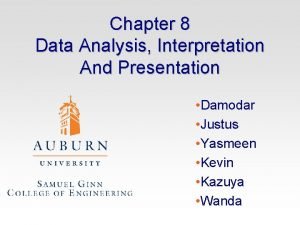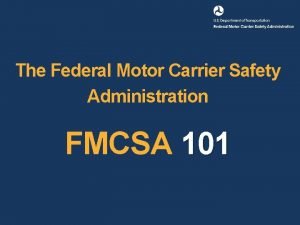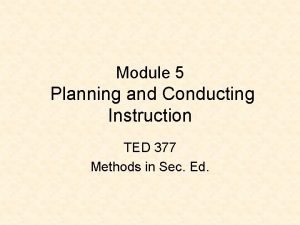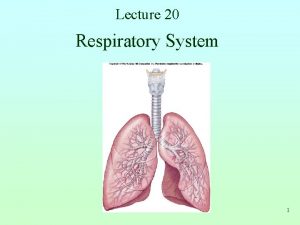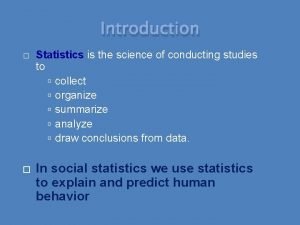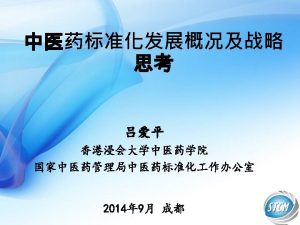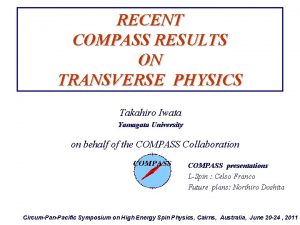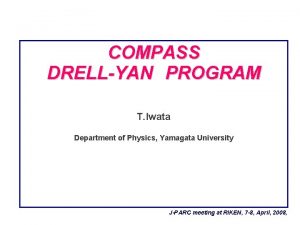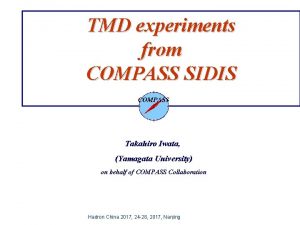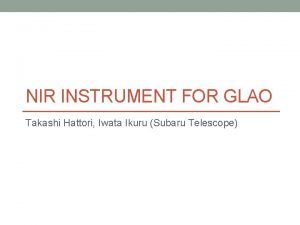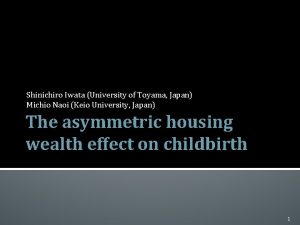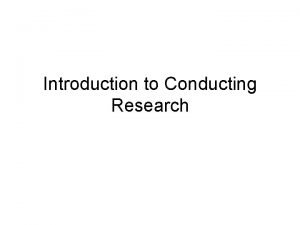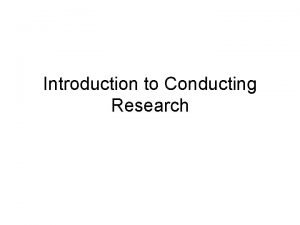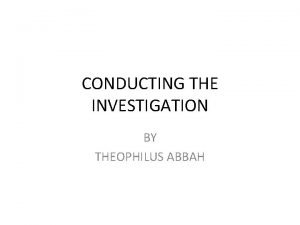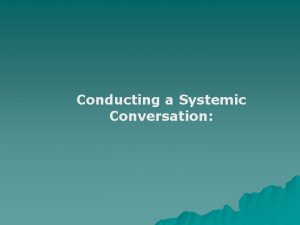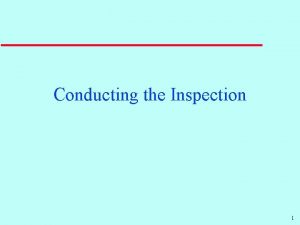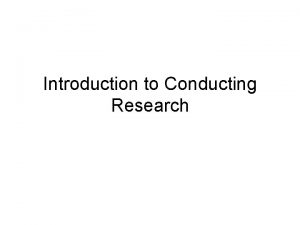Level 1 Conducting Standard FA Sessions Iwata et




























- Slides: 28

Level 1 Conducting Standard FA Sessions

Iwata et al. (1982/1994) • Seminal demonstration of FA methodology – Consists of 3 -4 test conditions and 1 control condition • Test conditions isolate reinforcement contingencies – Alone, attention, demand, tangible • Control condition eliminates value of reinforcement across contingencies – Play 2

Functions of Behavior • Positive Reinforcement – Social (attention, materials) – Automatic (sensory stimulation) • Negative Reinforcement – Social (escape from demands, other aversive events) – Automatic (sensory attenuation) 3

Attention (Sr+) • Test for social positive reinforcement (Sr+) • Initial Instruction/Discriminative Stimulus (SD): Presence of therapist, statement “Here are some toys to play with; I have some work to do. ” – 2 -3 moderately preferred toys available (why? ) • Establishing Operation (EO): Deprivation from attention • Consequences: 3 -5 s of physical attention and a concerning statement / reprimand 4

EXAMPLE - Attention • Target behavior: Aggression – Definition: Any instance in which the client hits or kicks another person • Environmental arrangement? • Consequence? • Volunteer? 5

Let’s Try It! 6

Tangible (Sr+) • Test for social positive reinforcement (Sr+) • Pre-session: Access to highly preferred items for 1 - min prior to session start • SD: Presence of therapist and highly preferred items • EO: Removal of, and deprivation from highly preferred items • Consequence: 20 s access to highly preferred items – If target behavior occurs at the moment you are taking the items away, extend access by 20 s – If target behavior occurs during the access period, consider extending access by 20 s 7

EXAMPLE - Tangible • Target behavior: Aggression – Definition: Any instance in which the client hits or kicks another person • Environmental arrangement? • Consequence? • Volunteer? 8

Here We Go! 9

Demand (Sr-) • Test for social negative reinforcement (Sr-) • SD: Presence of work materials • EO: Presentation of moderately difficult demands, using leastto-most prompting (verbal/model/full physical; 5 sec between prompts) • Consequences – Compliance with verbal or gesture: Praise – Target response: Removal of task and 20 s escape • If target behavior occurs when approaching with materials at the end of an escape interval, extend by 20 s OR • If target behavior occurs at any point during the escape interval, extend by 20 s 10

EXAMPLE - Demand • Target behavior: Aggression – Definition: Any instance in which the client hits or kicks another person • Environmental arrangement? • Consequence? • Volunteer? 11

Practice Time 12

Ignore or Alone Condition • Test for automatic reinforcement – Ignore vs. alone: Presence vs. absence of therapist – Dependent on the conditions of the FA and target behavior • Initial Instruction: “Wait here, I’ll be back in a few minutes” • SD : Dependent on the function of behavior • EO: Dependent on the function of behavior (although barren room provides low stimulation and may increase EO for sensory reinforcers) • Consequences: No programmed consequences 13

EXAMPLE – Alone/Ignore • Target behavior: Aggression – Definition: Any instance in which the client hits or kicks another person • Environmental arrangement? • Consequence? • Volunteer? 14

Your Turn 15

Control (Play) Overview • Serves as most common control condition – Levels of responding during each test condition are independently compared to levels of responding during the control condition • Control components (Abolishing Operations (AOs)) – Access to preferred items – No demands present – Free access to attention 16

Play • Initial Instruction: “Look at these fun toys!” • (SD): Presence of therapist in close proximity to client (within 3 ft), oriented toward client signals availability of attention; presence of highly preferred toys • EO: NONE for target behavior; Social EOs abolished by providing: – 2 -3 highly preferred toys – 3 -5 s of physical attention with pleasant comments every 20 s (fixed time schedule) and following appropriate requests for attention (differential reinforcement of alternative behavior) • Consequences: – No programmed consequences for target behavior – 5 sec delay if challenging behavior occurs when about to deliver attention 17

EXAMPLE - Play • Target behavior: Aggression – Definition: Any instance in which the client hits or kicks another person • Environmental arrangement? • Consequence? • Volunteer? 18

One Last Time 19

Functional Analysis Protocol Condition EO SD Consequence Contingency Alone/Ignore Lack of Stimulation Function Dependent N/A Automatic Sr? Attention Lack of Attention Presence of Therapist Attention Sr+ (attention) Tangible Removal of items Highly Preferred Materials Tangible Sr+ (tangible) Demand Presentation of instruction Presence of Work Materials Escape Sr- (escape) Control N/A NCR/Sr+ Control 20

FA Results - Escape 21

FA Results – Attention 22

FA Results – Automatic 23

Practice Time! ROUND ROBIN ACTIVITY • Everyone line up • Pick one “condition” card • Pick one “target response” card • Please consider – Environmental arrangement – Initial SD – Consequences for target and/or distracter behavior 24

Modifications • Most times when developing an FA we need to individualize conditions & experimental arrangements – E. g. , length of sessions, types of environmental arrangements, etc. • Throughout future levels of this FA curriculum, you will learn how to make such modifications 25

Modifications • For now, please note in future exercises with clients (e. g. , Level 2), we may ask you to vary slightly from the scripts & session descriptions you’ve learned thus far to benefit the programming needs of the client – For example, you may be asked to do longer sessions, modifications to environmental arrangements, use different reinforcers 26

Thank you! • Now you are ready to continue on to the simulated conditions portion of Level 1! 27

Conducting Simulated Conditions 28
 Craig iwata
Craig iwata How to conduct jad sessions
How to conduct jad sessions Hkn uiuc review sessions
Hkn uiuc review sessions Employee listening sessions
Employee listening sessions Asc tamu
Asc tamu Asn scientific sessions
Asn scientific sessions Sessions without cookies
Sessions without cookies Where is the breakout session panel in webex
Where is the breakout session panel in webex Rolling stone origin
Rolling stone origin #sessions with conversions
#sessions with conversions Kaizen sessions
Kaizen sessions Data analysis, interpretation and presentation
Data analysis, interpretation and presentation Standard error statistics
Standard error statistics Difference between home language and standard language
Difference between home language and standard language Site:slidetodoc.com
Site:slidetodoc.com Kurikulum sekolah menengah
Kurikulum sekolah menengah Fmcsa north american standard level i course online
Fmcsa north american standard level i course online Spirogram diagram
Spirogram diagram Respiratory zone
Respiratory zone Conducting zone lungs
Conducting zone lungs Electric potential inside non conducting sphere
Electric potential inside non conducting sphere Planning and conducting instruction in the classroom
Planning and conducting instruction in the classroom What is the conducting zone of the respiratory system
What is the conducting zone of the respiratory system The science of conducting studies to collect
The science of conducting studies to collect What is a fair test in science
What is a fair test in science Two neutral conducting pop cans are touching each other
Two neutral conducting pop cans are touching each other Electric potential inside non conducting sphere
Electric potential inside non conducting sphere Chapter 29 conducting marketing research answers
Chapter 29 conducting marketing research answers What is forced choice questions
What is forced choice questions

